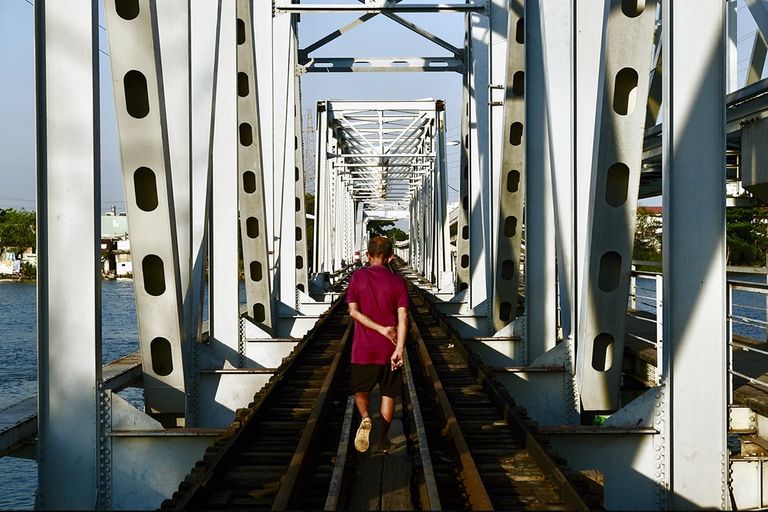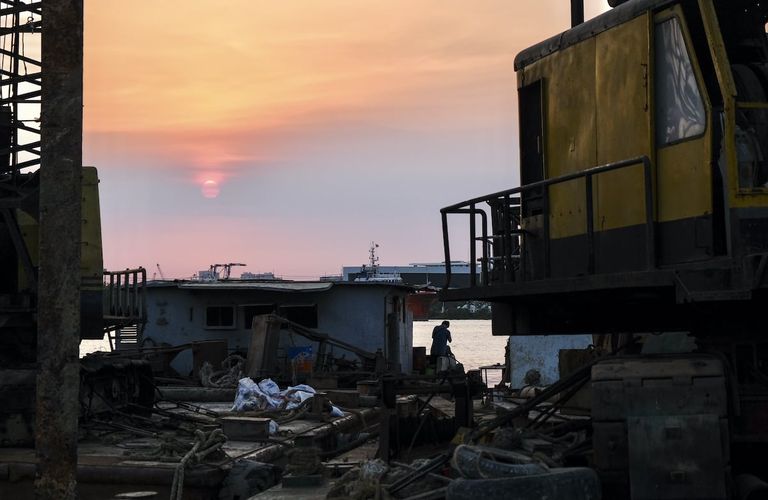Born and raised in Hue, Duc Vu now lives in Saigon. With a background in architecture, Duc is working as a reportage photographer, with special interests in street, lifestyle, urbanization and heritage photography. His works at various sports and cultural events have previously been featured in the weekend’s paper publications of Tuoitre, as well as on Vietnamnet and VNExpress’ online editions.

At individual news events, Duc dives headfirst into the action. Being fast on his feet enables him to snap incredible candid shots that perfectly encapsulate the stories he wants to convey; only sometimes, Duc’s subjects would mistake him for a pickpocketer. But it helps that he always stops to explain and show them the photos.
For long-term documentary projects, Duc takes a completely different approach. Slow and steady, he seeks to create a real connection with his subjects, so they can feel comfortable around Duc and his camera. Once past this stage, many turn out to embrace the photographer like a family member. He’s sometimes even been invited to stay for dinner or a glass of beer, and Duc always has a way of capturing that homeliness in his photos.
If you were a building, which one would it be?
Fallingwater by Frank Llloyd Wright. It’s a man-made construction existing in harmony and respect for nature — a mansion above a waterfall and below the shades of trees.
I love the great outdoors, so I always try to incorporate nature into my work. Fallingwater has an interesting backstory: it’s a private home-turned-UNESCO world heritage site, designed by an informally-trained architect.

Does your knowledge of architecture influence your photography style?
It does, actually. Whenever I’m shooting and then editing, I’m very much grounded by angles and compositions, which sometimes results in photos coming out rather stiff.
While I love to have freedom in photography, I’m also interested in human relationships with urban works. Often, after a while of experimenting with the camera, I’d come back to one of the basic compositions without even realizing it.
Lucky for me, I’ve also had plenty of opportunities to familiarize myself with art. It helps me tie in principles of colors, lighting and anatomy to soften those photography lines and shapes.

One thing that irritates you the most about your job?
That feeling when you’re aiming through your camera and realize you forgot your battery or memory card. All inspirations gone!
Speaking of that, is your creative energy ever influenced by emotions?
Yes, but not a dominant factor.
Working in creativity, bad moods can feel discouraging. But I’ve learned to practice regenerating my own energy and sensibility for art.
That’s a must in order to pull through any long-haul photography projects for me.

How do you identify the most valuable frame among so many taken?
When I’m taking photos, I make a lot of quick observations, hitting the shutter button repeatedly. Then I’ll stop when I can tell I’ve just taken the best shot.
Any photographer will need plenty of practice editing and exercising their own judgment before they can accomplish that. Only with experience will they be able to find their own most valuable frame.

What’s the significance of storing images to you?
Very important. I know some people who invested in archive rooms that are diligently sorted. To them, their works are their timeless legacy.
A good storage device is also pivotal to the success of long-term documentary projects.

Is Saigon lifestyle your main scope of work?
In my photography, I care about people and the urban landscape. The hustle and bustle of Saigon streets really fascinates me, and you can find me wandering around the city with my camera whenever I’m feeling a little stressed out or pent up.
I find that Saigon has an even more peculiar feel on special occasions, like right now. Earlier during this COVID-19 wave, I did a photo series called “Sau 17h mùa Covid” (“After 5 pm during Covid”) to capture the calm moments of the day.
But sometimes, I’m outside taking a stroll just to be able to watch and chat with the people here. I find them so approachable, fun and genuine.

The architecture featured in your photos are usually infrastructures. Why not private homes or any other construction?
That could be a coincidence. I photograph a lot of infrastructures because they have a strong linkage to people and play an important role in our everyday life, but I do have other projects on urbanization or civil constructions.
I love all beautiful architecture that’s also part of heritage. Even if there’s only a column or some impressive pattern left of it.

Why did you choose photography to capture the movements of life? How important are your chosen locations and communities to you?
My journey with photography isn’t different from others. It’s a process, and I personally fell in love with it as I saw how photos could conveniently capture the cycle of life — but also how they could help me best convey my ideas to others.
My photography projects are usually conceptualized from scratch, so choosing the location is a key step. Personal feelings and biases inevitably play a factor here, which is why the people featured in my projects could have some kind of connection to myself. Sometimes my childhood or perhaps my current state of mind is involved, but it could also be just a little peek into the past.
Being in touch with my subjects helps me exercise empathy for them. I’d be able to gain a better understanding of how their life might look after urban development has taken place in their neighborhood.

It’s often said that our eyes are the best camera lens we could have. As a photographer, what do you think about that statement?
There are many deciding factors in a good photo for me. Besides the pair of eyes behind it, there’s also the moment, the equipment, and a little bit of luck.
Sometimes, we’ll catch a beautiful moment but lack the quality equipment to capture it the way we want. Or, it might have passed while we were grabbing that very equipment.
I think our eyes would indeed be the best camera lens in the case of still or posed images.

The Factory Contemporary Art Center (The Factory) is the first purpose-built space for contemporary art in Vietnam, operating under the business model of a social enterprise, The Factory focuses on interdisciplinary cultural activities to introduce and expand knowledge of contemporary art in Vietnam.
Address: The Factory Contemporary Art Center, 15 Nguyen U Di, Thao Dien Ward, District 2, Ho Chi Minh City
Contact information: art@factoryartscentre.com | +84 (0)28 3744 258
Translated by Jennifer Nguyen

